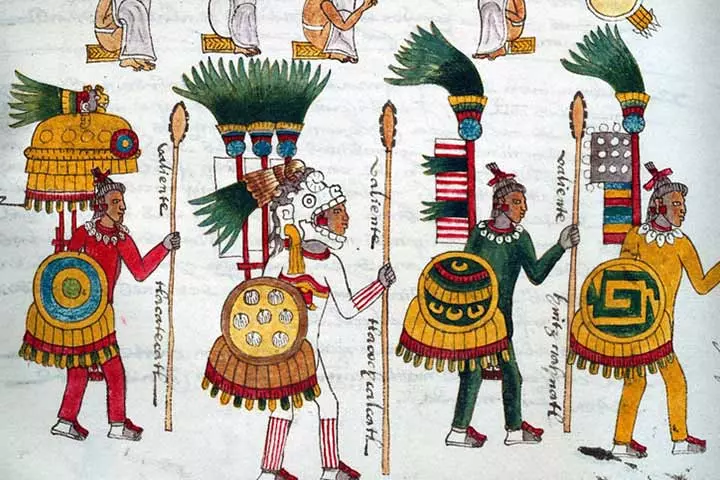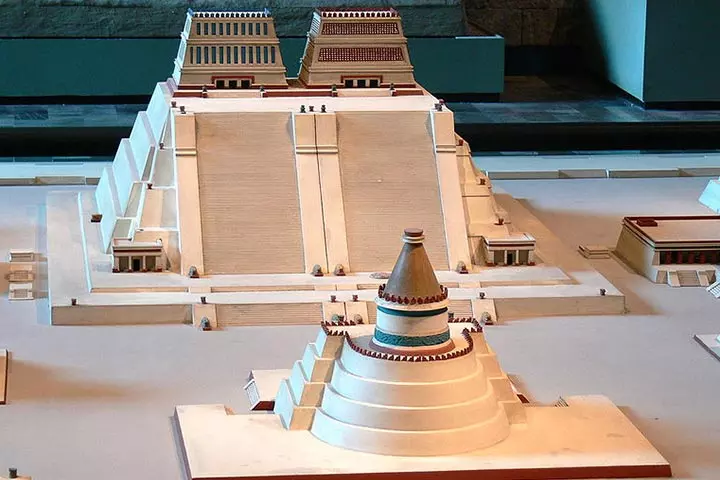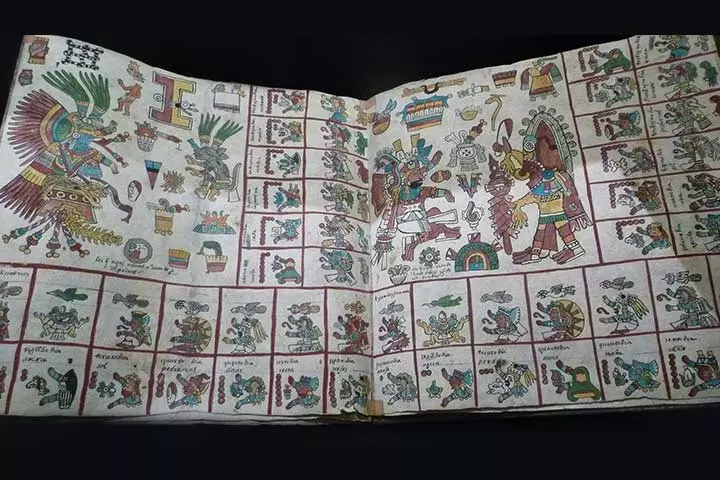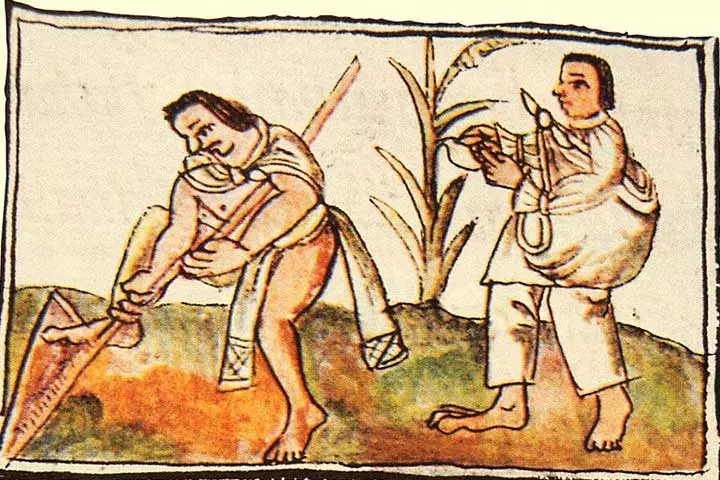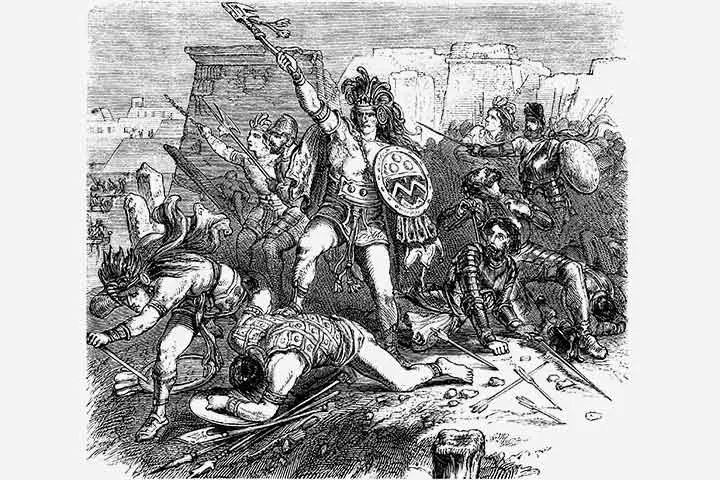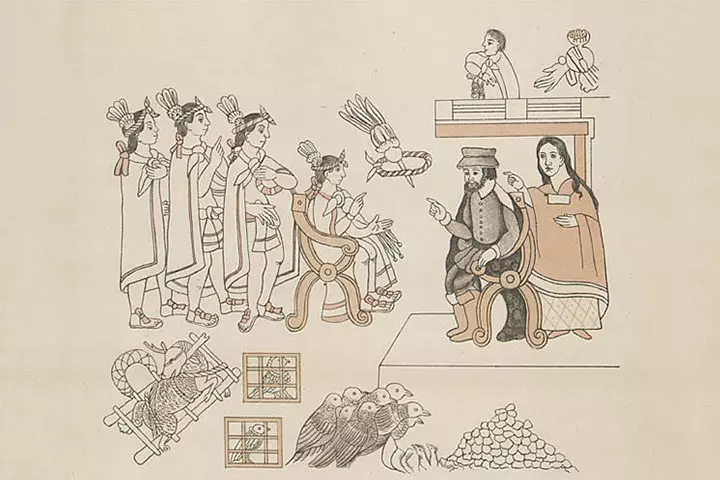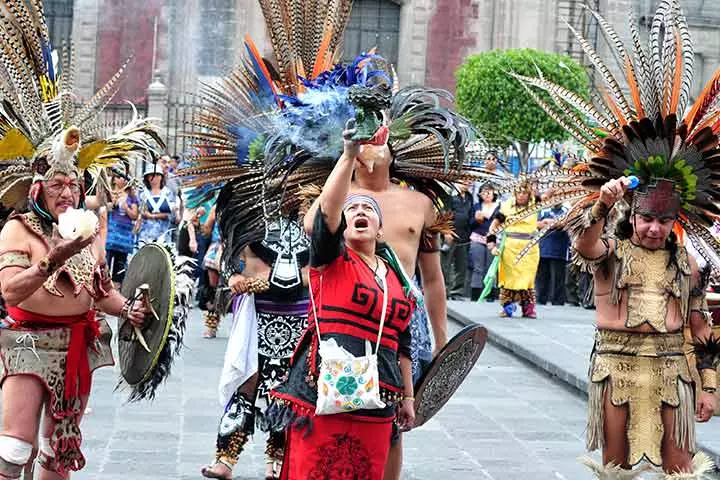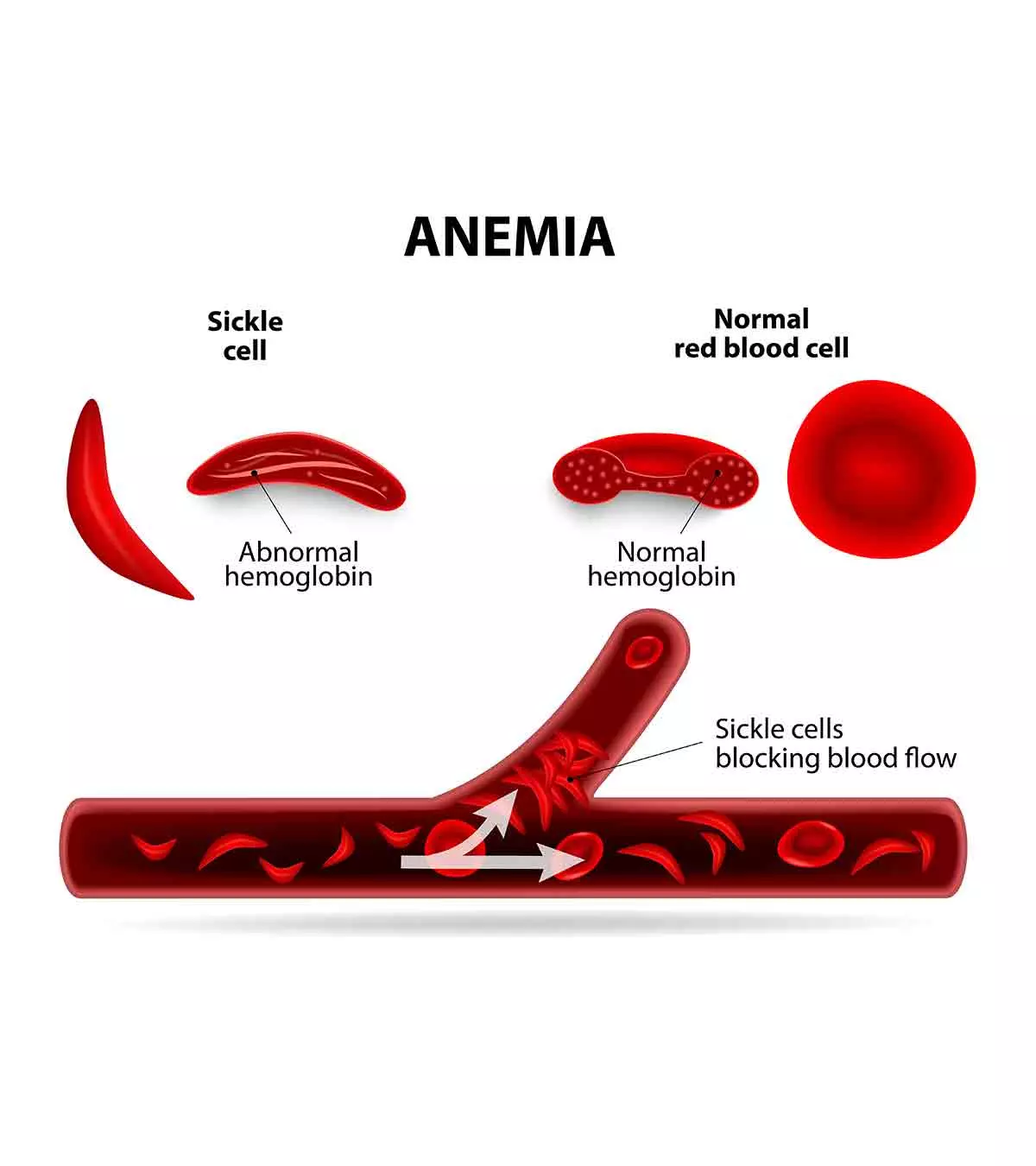

Image: ShutterStock
Aztecs’ acute agricultural prowess made them a prosperous civilization. Their rapid rise in power and influence is admirable considering they barely used any metal weapons and armor. It is the rich and fascinating stories about such ancient civilizations that make history more interesting. We seldom realize it, but the influence of Aztecs continues to persist even today in the food we eat, the words we use, and the places we know.
Have you ever seen any of the Aztec relics? Do share more about it with us in the comment section below.

The Aztecs founded the Mesoamerican civilization or the Aztec empire. There is a country believed to have originated from the Aztecs. Find out more through the interesting Aztec facts for kids in this post. The civilization boasted an influential and rich culture and covered a different part of modern-day Mexico. They dominated North America for more than two centuries until the Spanish defeated them. Read on for a collection of facts about the Aztecs and their influence over North America to keep the children engaged. Your little ones will find them fascinating and share them with their friends.
Name and Origins
Image: courtesy: Codex Mendoza
- The name ‘Aztec’ comes from the Nahuatl language spoken by the Aztec people. It means the ‘people of Aztlan’, which is considered to be a mythical place from where all the Aztecs originated.
- Some scholars and historians speculate that Aztlan might be a real place that was probably located somewhere between northern Mexico and the US border.
- The Aztec people called themselves Tenochca and Mexica. The term ‘Aztec’ was a collective term used by the Tenochca people to refer to all communities that originated from the land of Aztlan.
- Several European historians of the early 19th century began referring to the Tenochca people as the ‘Aztecs.’ The word was eventually adopted by other historians, including Mexican historians, and the name Aztec became a common term used for the Tenochca people.
- The Aztecs were originally a nomadic tribe. They migrated to the south from northern Mexico. Legend says that in the year 1323, the Aztecs arrived at a lake where they saw an eagle perched on a cactus, eating a snake that it held with its claws. They believed it was a good sign and decided to make a city and settle right where they spotted the eagle.
City and Civilization
Image: courtesy: National Museum of Anthropology in Mexico City
- The Aztecs drained the swampy land of water and built a huge artificial island on the western end of the lake, which was named Texcoco.
- The island became the capital of the Aztecs, and they named the place Tenochtitlan, after their own civilization, Tenochca.
- The Tenochtitlan island would be further divided into two parts. The substantial southern part of the island retained the name Tenochtitlan while the northern part was called Tlatelolco.
- The year 1376 marked the formal beginnings of the Aztec empire. An Aztec called Acamapichtli was chosen by the people as their first ruler.
- In the year 1440, Moctezuma I was elected to the throne of the Aztec empire. He and his descendants eventually expanded the Aztec empire. By the early 1500s, the Aztecs overthrew most regional kingdoms to become a dominating superpower.
- Tenochtitlan became the center for trade and commerce. At its peak, the city boasted a population of 300,000 to 700,000, which included all the suburbs that surrounded the lake.
Language and Art
Image: Shutterstock
- The Aztecs’ native language was Nahuatl, which they continued to speak even after switching from a nomadic lifestyle to an agrarian one. The language had no alphabet system and relied on pictorial depictions and communicated through pictorial sketches.
- Most Aztecs knew how to write Nahuatl, although it is believed that priests did most of the writing. Nahuatl images were drawn using charcoal, on paper made from the bark of the tree or skin of an animal. Coloring was done using dyes from fruits and vegetables.
- The Aztecs loved art. Painting on deerskin was common, as was pottery and ceramic painting. However, the Aztecs are best known for their stone sculptures of animals and gods, their favorite subjects. Animals that they sculpted with amazing details still exist today.
Agriculture and Economics
Image: courtesy: Florentine Codex by Bernardino de Sahagun
- The Aztecs were excellent farmers. They would build small artificial islands called chinampas within the lake. Each island would serve as a patch of a farm.
- Narrow canals that bordered the islands served as the source of water for the farms. The Aztecs would move from one farm to another by rowing a canoe through these canals.
- The essential crop for the empire was corn (also called maize), which was widely cultivated. Other crops grown were tomatoes, squash, beans, chili peppers, potatoes, and avocados.
- Aztecs would also fish and hunt. Common animals hunted by them included rabbits, wild turkeys, armadillos, coyotes, and even snakes.
- If you love Chocolate, then thank the Aztecs! Kingdoms that were under the rule of Aztecs had to pay cocoa beans as royalty to the king. Chocolate beans were imported to the capital Tenochtitlan where it could not be grown naturally.
Aztecs mixed powdered cocoa beans with water to create a frothy drink consumed with other flavorings such as honey, chili pepper, or flower petals. Chocolate beverages were often drunk after dinner.
- The early use of vanilla also dates back to the Aztec era. The Aztecs learned how to cultivate vanilla plants from tribes they had conquered. Vanilla, which was also popular among the Aztecs, was often used to flavor the chocolate drinks.
- Cocoa beans were a common currency used by Aztecs. Prices of commodities were defined as per the number of cocoa beans the item was worth.
- The Aztecs had weekly markets, usually in the Tlatelolco part of the Tenochtitlan city. Farmers, artisans, fisherman, and other traders would sell their produces and wares. Some historians believe that the market was held five days a week and was visited by over 10,000 visitors.
- Interestingly, Aztecs did not use metals and most of their weapons comprised of sharpened stones and wood batons. They did seem to have some knowledge of metal smelting and used gold to make decorative items that were used in religious ceremonies.
Society and Culture
Image: IStock
- Aztecs worshiped three dozen or more gods and goddesses, including supernatural deities. There had a god for almost everything: the wind, sun, moon, and even gambling!
- The Aztec religion and religious practices were based on the Aztec calendar. There were two calendars: one told the dates while the other only said the day for specific rituals. The standard calendar cycle consisted of 365 days, and the ritual cycle had 260 days. The Aztec calendar stone, also called the Aztec Sun Stone, is probably the most famous representation of their calendar.
- A Xiuhphualli was the regular calendar that was based on the movement of the sun. Decisions about agriculture were taken as per this calendar. The Tonalpohualli was the ritual calendar and determined when the different gods have to be worshiped and various festivals celebrated.
- At the center of Tenochtitlan lied a massive temple complex called the Templo Mayor or the ‘Greater Temple.’ Several Aztec rulers built and expanded the temple in succession, during their rule. The deities to which the temple was dedicated were Huitzilopochtli (god of war), Tlaloc (god of rain & agriculture), and Quetzalcoatl (wind god).
- The temple’s original structure did not survive. However, archaeological excavations and historical records show that the main shrine of the temple was placed on a large pyramidal structure with a flat top. The temple was entirely made of stone blocks (just like Egypt’s pyramids). Stones were most likely transported through boats using the canal system of the city.
- Aztec society made education mandatory. Each child would have to go to school to get an education and learn the native tongue.
- Aztec society had several hierarchies. The elite were the ’nobles.’ The supreme among them were called the ‘lords,’ who could hold an essential position in the government or the military.
- Slavery was a common part of Aztec society. Families could sell children as slaves. A person could also sell themselves as a slave to pay off debt. Slaves were often indentured, which means they were only slaves for a period as directed by their contract.
- Although cruel, slavery among the Aztecs was very liberal. For instance, slavery was not inherited, which means children of slaves were spared from slavery. Slaves could own their possessions, marry, have their land, and even have slaves of their own. A slave could also buy their freedom by paying a fee to their master.
- Human sacrifice was another infamous attribute of the Aztecs. Sacrifices were usually made to appease the gods. Most sacrificial human beings were prisoners of war. Children would be sacrificed during difficult times to convince the gods for mercy.
- Sacrifices were quite likely made at the temple (probably Templo Mayor) by priests using sacrificial knives made of stone. Cannibalism of those sacrificed was another attribute displayed by the Aztecs.
Image: IStock
- Historians have been puzzled by the need for a flourishing civilization to practice cannibalism. Historians for long believed that cannibalism was a way for the Aztecs to include protein in their diet. However, Tenochtitlan had a rich source of fish and other animal food. Religious beliefs could probably be the only reason why the Aztecs may have resorted to cannibalism.
- The Aztecs enjoyed sports too, and their favorite was the ball game called Ullamaliztli. The game involved two teams facing one another and shuttling a rubber ball towards one another by striking it only with their hips. Hitting the ball with another part of the body or holding it with hands would result in the team losing a point.
- Ullamaliztli had a religious significance for the Aztecs. Ullamaliztli matches would be organized in markets, and the local crowd would even bet on their favorite teams to win.
European Invasion and Downfall
Image: courtesy: Bancroft Library, University of California
- The western world had their first contact with the Aztec Empire during the visit of the Spanish explorer and conquistador (conqueror in Spanish) Francisco Hernandez de Cordoba. His visit quickly prompted the Spanish’ interest in the Aztec empire.
- In November 1519, the Spanish conquistador Hernan Cortes, with his 400 trained soldiers, arrived at Tenochtitlan. Cortes and his army received a warm welcome by the then Aztec king Moctezuma II.
- It is said that Moctezuma II probably thought Cortes to be an incarnation of the Aztec god Quetzalcoatl, whose return was prophesied in the Aztec mythology. It may explain the reason behind the warm welcome to the Spaniards.
- The Europeans brought with them several pathogens, which the Aztecs were not immune to. Smallpox was one such major disease that the Spanish brought to the Aztec empire. Scores of the Aztec population perished due to smallpox.
- As if the disease was not enough, the Aztecs eventually were in a full-blown war with the Spanish. Cortes had secretly allied with other tribes in the region that were at war with the Aztec. The kingdoms that were against the Aztecs provided Cortes with slaves, which included La Malinche. She would become the principal translator for Cortes for his communication with the Aztecs, who spoke the Nahuatl.
- The primitive stone and wood weapons of the Aztec were of no match to the metal weapons and armor of the Spanish. Cortes defeated and overtook the Aztec empire in August 1521 thus marking the end of the vast and rich Aztec empire.
Impact on Modern World
Image: Shutterstock
- We can thank Aztecs for introducing the rest of the world to plants such as tomatoes, chocolate, and avocado. The English names of these foods are derived from the Aztec’s Nahuatl language.
- The city of Tenochtitlan exists even today as Mexico City, the capital of Mexico. Hernan Cortes founded Mexico City on the ruins of Tenochtitlan, the great city of Aztecs. The remnants of Tenochtitlan, including the canals, remain today at the center of the Mexico City within a borough called Xochimilco.
- The Aztec style of island farming called chinampa is still practiced in parts of Mexico today.
- The game of Ullamaliztli is still played today and is called Ulama. It is sometimes generically referred to as Mesoamerican Ballgame. Ullamaliztli matches are commonly organized in different parts of Mexico.
- The Nahuatl language and its derivatives are still spoken in small communities scattered across Mexico. The Nahua people, who speak the language, are the indigenous people of Mexico who can trace their roots to early civilizations of the region, which includes the Aztecs.
- Did you know the name of Mexico itself originates from Mexica – the real name of the Aztec people?
- The flag of Mexico bears the figure of an eagle eating a snake while perched on a cactus. It is the image taken straight from the Aztec legend that prompted the establishment of Tenochtitlan.
- Even till today, Mexico’s cuisine is heavily influenced by the food eaten by the Aztecs. For example, corn continues to be a staple in the Mexican diet. So the next time you have a corn taco, remember to thank the Aztecs!
Frequently Asked Questions
1. What did the Aztecs do every day?
The daily life of Aztecs depended on their social class. The people belonging to the upper class held more power and were a part of the government, military, or religion. Middle-class people lived an average life and worked as farmers, warriors, merchants, and artisans.
2. How did the Aztecs entertain themselves?
The Aztecs entertained themselves by playing games, listening to music, reading poems and stories, and dancing. Music and dance were an essential part of their culture.
The Aztecs were skillful individuals who carried their civilization to prosperity with their agricultural expertise and without little to almost no assistance from armors and metal weapons. These astonishing Aztec facts for kids give an insight into their fascinating culture and civilization, whose influence can be seen even today in some foods, words, and places. So piques your child’s interest with these fascinating stories and information of the past that helped build the world we live in today.
Key Pointers
- The ancient tribe of Mexico, Aztecs, were known for their exceptional agricultural skills.
- They were fond of sports and worshiped various gods and supernatural entities.
- The Aztecs made education a compulsion and also are credited with introducing tomatoes and avocados to the world.
Community Experiences
Join the conversation and become a part of our nurturing community! Share your stories, experiences, and insights to connect with fellow parents.
Read full bio of Sravani Rebbapragada

